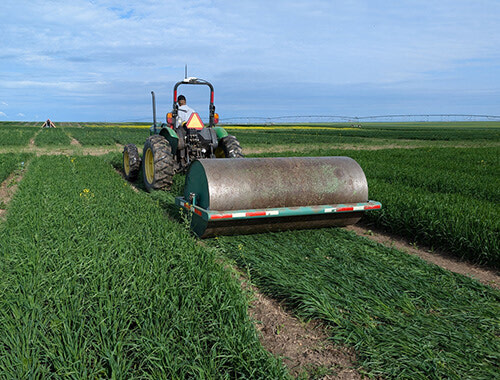Farmers have wondered which timing provides the most benefits from rolling wheat and barley. After completing 9-site years, we have revealed the clear and consistent effects of rolling timing on crop health for multiple growth stages.
Crop losses from hail damage vary with intensity, timing and spatially. Producers have few options available after hail damage other than reseeding, silaging/greenfeeding or waiting to harvest what remains.
Two experiments were conducted to measure the responses of winter wheat to enhanced efficiency N fertilizers and timing/placements across the Canadian Prairies.
- May 01, 2016
Poor stand establishment resulting in lower yield is a major constraint to expanding winter wheat (Triticum aestivum L.) across western Canada. We conducted a study totaling 26 site-years over three growing seasons
- July 01, 2016
Poor stand establishment resulting in lower yield is a major constraint to expanding winter wheat (Triticum aestivum L.) land area across the semiarid temperate regions of the northern Great Plains.
- December 21, 2018
In response to concerns about acetolactate synthase (ALS) inhibitor--resistant weeds in wheat production systems, we explored the efficacy of managing Bromus spp., downy and Japanese bromes, in a winter wheat system...
- October 2018
Leaf spotting diseases commonly occur on spring wheat crops grown in Saskatchewan, causing yield losses of up to 15%, although greater losses have been documented during severe epidemics.
Crop losses from hail damage vary with intensity, timing and spatially. Producers have few options available after hail damage other than reseeding, silaging/greenfeeding or waiting to harvest what remains.





